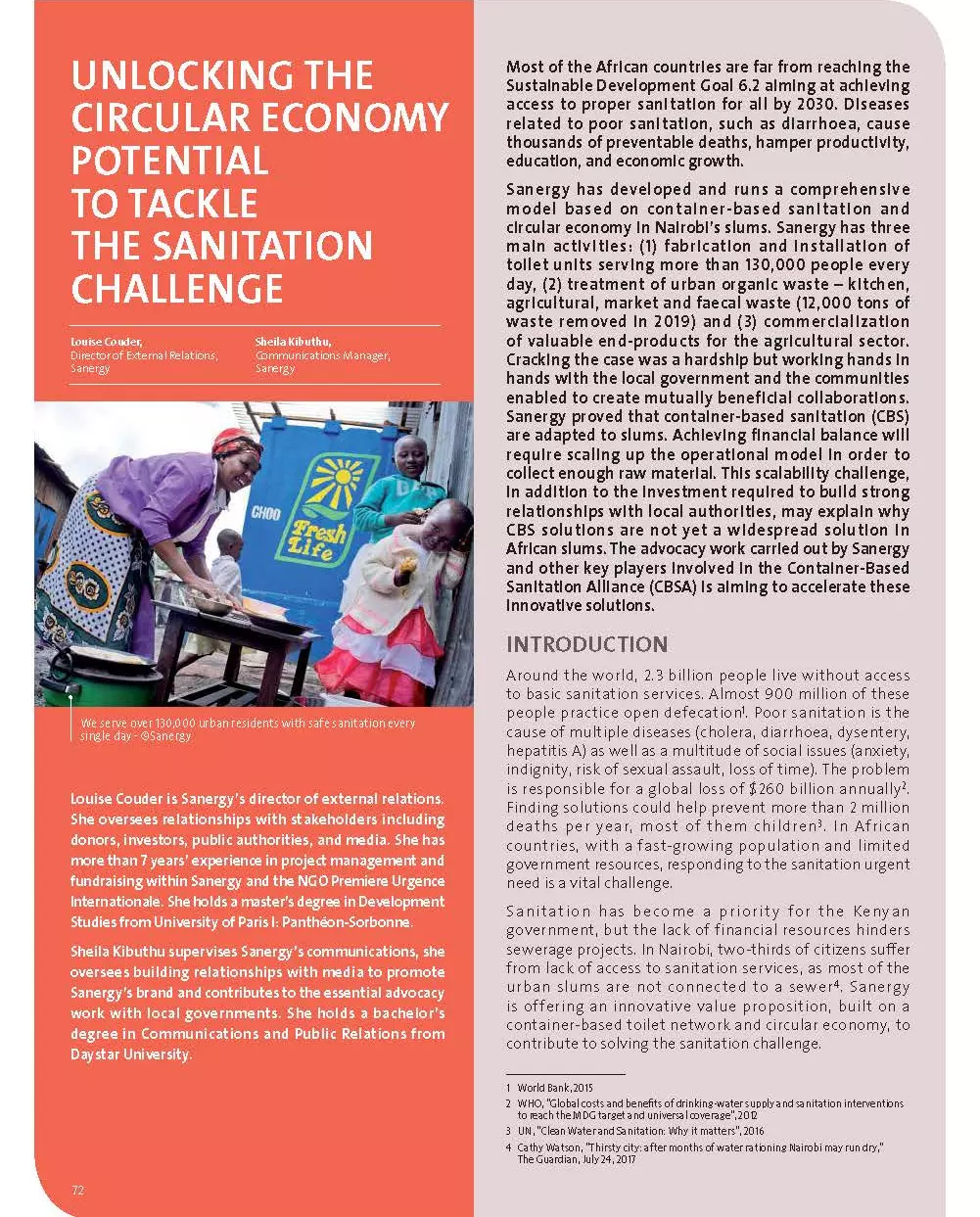Louise Couder, Director of External Relations, Sanergy
Sheila Kibuthu, Communications Manager, Sanergy
Most of the African countries are far from reaching the Sustainable Development Goal 6.2 aiming at achieving access to proper sanitation for all by 2030. Diseases related to poor sanitation, such as diarrhoea, cause thousands of preventable deaths, hamper productivity, education, and economic growth.
Sanergy has developed and runs a comprehensive model based on container-based sanitation and circular economy in Nairobi’s slums. Sanergy has three main activities: (1) fabrication and installation of toilet units serving more than 130,000 people every day, (2) treatment of urban organic waste – kitchen, agricultural, market and faecal waste (12,000 tons of waste removed in 2019) and (3) commercialization of valuable end-products for the agricultural sector. Cracking the case was a hardship but working hands in hands with the local government and the communities enabled to create mutually beneficial collaborations.
Sanergy proved that container-based sanitation (CBS) are adapted to slums. Achieving financial balance will require scaling up the operational model in order to collect enough raw material. This scalability challenge, in addition to the investment required to build strong relationships with local authorities, may explain why CBS solutions are not yet a widespread solution in African slums. The advocacy work carried out by Sanergy and other key players involved in the Container-Based Sanitation Alliance (CBSA) is aiming to accelerate these innovative solutions.



